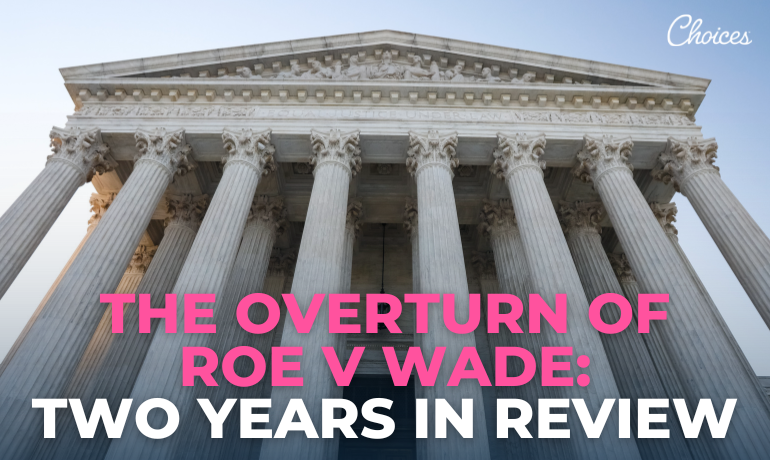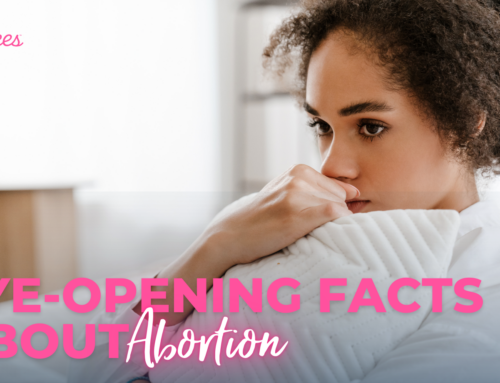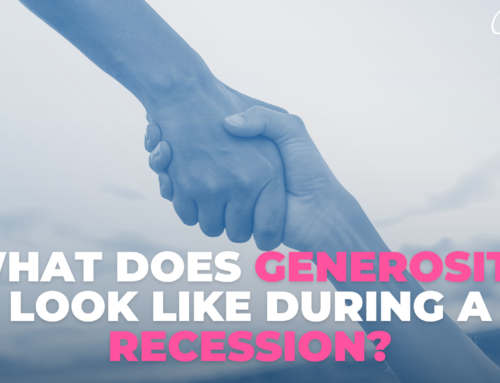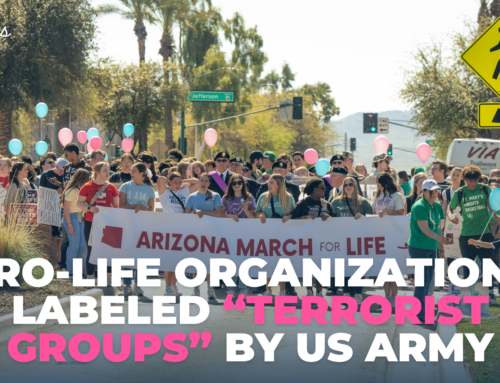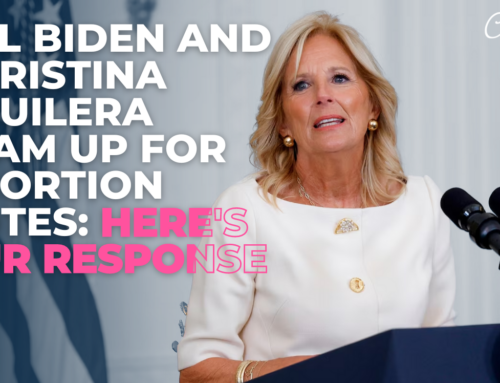Two years ago this month marked the groundbreaking overturn of what had been decades of legalized killing of innocent children. It was a decision that shocked the nation. But for Choices Pregnancy Centers and those of us on the front lines in the fight for life, the real shock was that abortion could ever have been treated as a constitutional right in the first place. The journey from Roe to its reversal has been long and arduous, but the Supreme Court’s decision two years ago reignited the hope for a future where every life is cherished and protected.
The Overturn of Roe v. Wade: A Recap
In making their case for overturning Roe, advocates argued that abortion was never constitutional. Supreme Court Justice Samuel Alito was pointed in his critique of the 1973 Roe v. Wade ruling, which overruled all state laws at the time and established a so-called constitutional ‘right’ to abortion nationwide. In the Supreme Court’s majority opinion in the Dobbs case, the Justice called Roe “egregiously wrong from the start,” emphasizing that the U.S. Constitution does not confer a right to abortion.
Justice Alito noted that the Fourteenth Amendment, which the deciding Justices in Roe relied upon for a so-called “right to privacy” that encompassed abortion does not protect abortion under any legitimate understanding of that amendment. Historically, abortion was a criminal act and killed a living human being. The Court’s decision in Roe, Alito alluded, short-circuited the democratic process and, therefore, should be overruled.
Key Takeaways:
- No Constitutional Right to Abortion: Justice Alito’s decision discussed how there is no right to abortion in the Constitution, and there never has been. No state constitutions had discovered a right to abortion before Roe.
- Exceptionally Weak Grounds: Alito stated that Roe “was more than just wrong,” adding that it “stood on exceptionally weak grounds” and should be corrected. It had no “grounding in the constitutional text, history, or precedent.”
- Return to Democratic Process: Alito, and the justices who concurred in his opinion, believed it was time to “return the issue of abortion to the people’s elected representatives” — an issue that the “Court usurped” from the people.
- Historical Context: Alito stated the Fourteenth Amendment does not protect a “right” to abortion because by the time of its adoption, “three-quarters of the states had made abortion a crime at any stage of pregnancy, and the remaining states would soon follow.”
- Viability Framework: Alito noted that the trimester and “viability” framework established in Roe was the “Court’s own brainchild,” without any basis in the Constitution.
A Partial Victory
Overruling Roe was a necessary first step, but giving states the prerogative to regulate abortion was not a final victory. While this decision provided states with the right to protect their youngest citizens, many of our nation’s largest states, such as California, Illinois, and New York, have still legalized and even subsidized the killing of our children. We will not have true justice until the Supreme Court acknowledges the truth that, under our Constitution, every American – born or preborn – has an inherent right to life protected by the 14th Amendment.
What’s Happened in the Last Two Years?
The last couple of years have seen explosive change. The overturn of Roe v. Wade acted as a catalyst, making the abortion debate, if possible, even more heated. Here are just a few of the events that have taken place in the last two years.
- Shift in the Pro-Abortion Narrative: Instead of promoting abortion as “safe, legal, and rare,” the movement has shifted towards the “shout your abortion” stance. Far from being discreet, abortion is now presented as something to be proud of, even flaunted. This is incredibly sobering because, today, most scholars and academics, even in the pro-abortion camp, acknowledge that a preborn baby is a full-fledged human being.
- Abortion as Healthcare: Following the overturn of Roe v. Wade, a fresh narrative has emerged, loudly proclaiming abortion as “women’s healthcare.” Unable to honestly claim that a preborn baby is just a clump of cells and acknowledging that a fetus is a human being, they have shifted their arguments. Stories have hit the media, asserting that women face imminent risks to their lives due to the purported lack of access to abortion. However, in many well-known cases, a more serious examination reveals that the real stories were not as they first appeared.
- Ongoing Battles: Individual states have been forced to fight battles with varying degrees of success for the pro-life movement. For example, a South Carolina judge recently denied Planned Parenthood’s motion to change the state’s pro-life law currently protecting preborn children from abortion once a fetal heartbeat can be detected. Additionally, the U.S. Supreme Court heard arguments in U.S. Food and Drug Administration v. Alliance for Hippocratic Medicine regarding the FDA’s approval of the chemical abortion drug Mifepristone. Sadly, after hearing these arguments, the U.S. Supreme Court rejected the bid to restrict access to the abortion pill.
- Spike in Abortion Pill Use: As in-person abortions have become more difficult to access in some states, the abortion pill has become the most common form of abortion, with over 60% of abortions estimated to be committed via the abortion pill. This is after the Biden administration made the drug widely available with reduced oversight.
We Can’t Stop Standing for Life
At Choices Pregnancy Centers, we know that it is more important than ever to stand up for women in crisis and their preborn babies. At the end of the day, we offer care, love, and support to those in trouble. We need your help and your support, as this battle for life is nowhere near won. Please consider donating or supporting our ministry. For more information, visit our website at Choices or contact us today.


